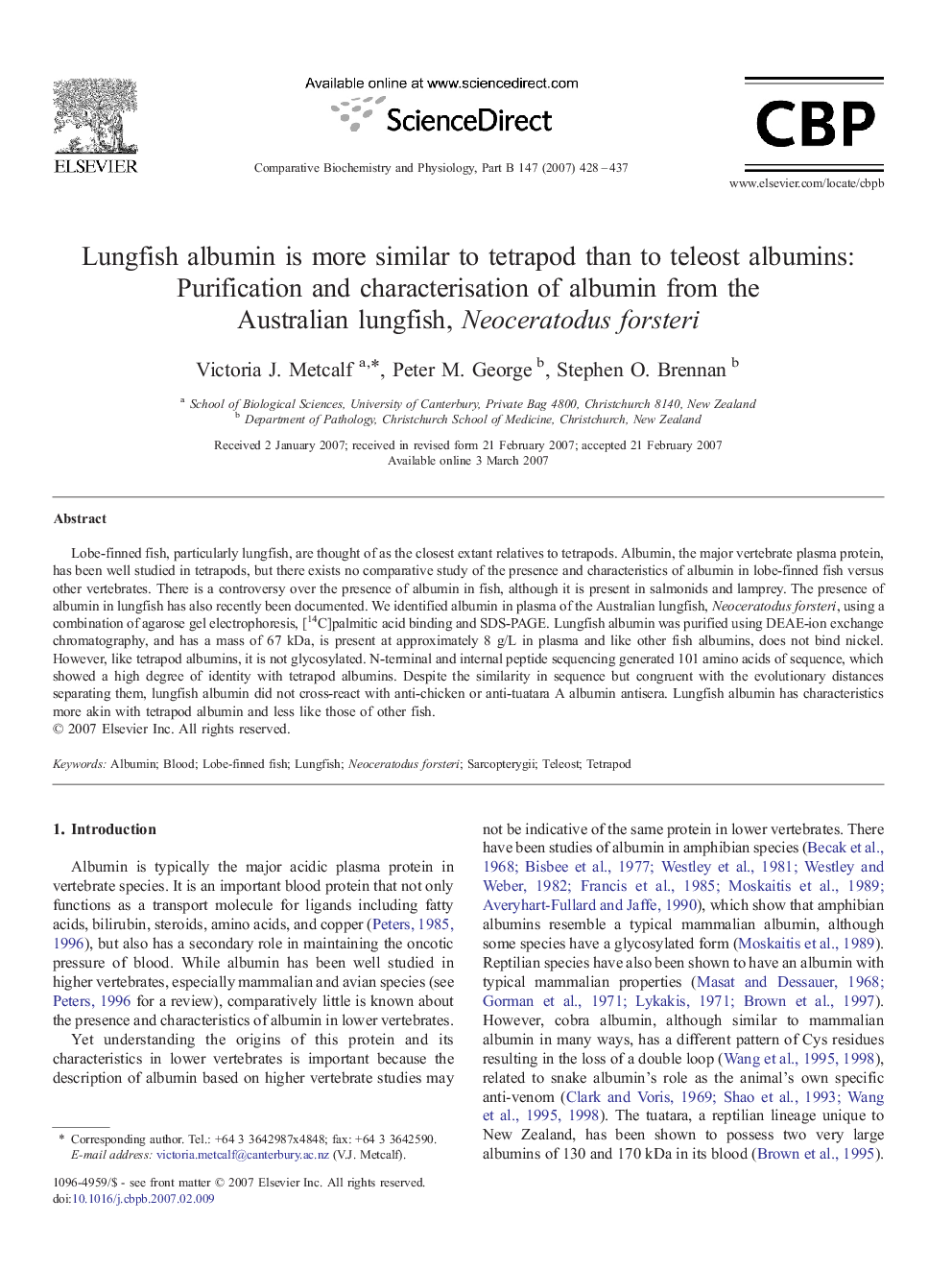| Article ID | Journal | Published Year | Pages | File Type |
|---|---|---|---|---|
| 1976695 | Comparative Biochemistry and Physiology Part B: Biochemistry and Molecular Biology | 2007 | 10 Pages |
Lobe-finned fish, particularly lungfish, are thought of as the closest extant relatives to tetrapods. Albumin, the major vertebrate plasma protein, has been well studied in tetrapods, but there exists no comparative study of the presence and characteristics of albumin in lobe-finned fish versus other vertebrates. There is a controversy over the presence of albumin in fish, although it is present in salmonids and lamprey. The presence of albumin in lungfish has also recently been documented. We identified albumin in plasma of the Australian lungfish, Neoceratodus forsteri, using a combination of agarose gel electrophoresis, [14C]palmitic acid binding and SDS-PAGE. Lungfish albumin was purified using DEAE-ion exchange chromatography, and has a mass of 67 kDa, is present at approximately 8 g/L in plasma and like other fish albumins, does not bind nickel. However, like tetrapod albumins, it is not glycosylated. N-terminal and internal peptide sequencing generated 101 amino acids of sequence, which showed a high degree of identity with tetrapod albumins. Despite the similarity in sequence but congruent with the evolutionary distances separating them, lungfish albumin did not cross-react with anti-chicken or anti-tuatara A albumin antisera. Lungfish albumin has characteristics more akin with tetrapod albumin and less like those of other fish.
